|
 |
Peter Fendi
|
|
1796-1842
Austrian
Peter Fendi Location
He was born in Vienna, Salzburg at (1796-09-04), and died in Vienna at 1842-08. |
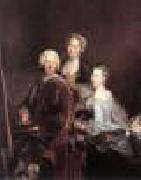 |
PESNE, Antoine
|
|
French painter (1683-1757)
French painter active in Prussia. He studied with his father, the portrait painter Thomas Pesne (1653-1727), and with his maternal great-uncle, Charles de La Fosse. In 1703, as a pupil at the Academie Royale, he would have won the Prix de Rome with his Moses and the Daughters of Jethro (untraced), had not Jules Hardouin Mansart, adviser to the Academie, deemed all entries that year unworthy. Nevertheless Pesne left for Italy, making the acquaintance of Jean Raoux in Venice and being allowed the use of a studio in Rome by Charles Porson, Director of the Academie de France. While in Venice, Pesne painted the portrait of Friedrich Ernst von Knyphausen |
 |
PESELLINO
|
|
Italian Early Renaissance Painter, 1422-1457
Italian painter. According to the catasto (land registry declaration) return of his grandfather PESELLO, Francesco di Stefano was five years old in 1427. He was the son of the painter Stefano di Francesco (d 1427), who married Pesello's eldest daughter. By the early 1440s, perhaps after initial training in his grandfather's workshop on the Corso degli Adimari, Florence, Pesellino appears to have joined Fra Filippo Lippi's workshop. He may have been the 'Franciesco di Stefano pittore' who enrolled in the Compagnia di S Luca in 1447. In August 1453 Pesellino went into partnership with Piero di Lorenzo di Pratese (d 1487) and Zanobi di Migliore, and numerous replicas of popular Virgin and Child compositions by Pesellino |
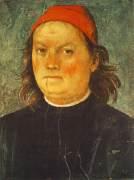 |
PERUGINO, Pietro
|
|
Italian painter, Umbrian school (b. 1450, Citta della Pieve, d. 1523, Perugia).
Italian painter and draughtsman. He was active in Perugia, Florence and Rome in the late 15th century and early 16th. Although he is now known mainly as the teacher of Raphael, he made a significant contribution to the development of painting from the style of the Early Renaissance to the High Renaissance. The compositional model he introduced, combining the Florentine figural style with an Umbrian use of structure and space, |
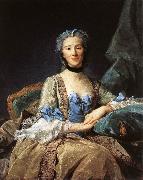 |
PERRONNEAU, Jean-Baptiste
|
|
French Rococo Era Painter, ca.1715-1783
French pastellist, painter and engraver. He was, with his older contemporary Maurice Quentin de La Tour, the most important pastel artist and portrait painter in 18th-century France. Perronneau trained first with the engraver Laurent Cars and then with the successful portrait painter Hubert Drouais. His work as an engraver, which includes prints after Charles-Joseph Natoire, Fran?ois Boucher, Edme Bouchardon and Carle Vanloo (see Vaillat and Ratouis de Limay,), did not continue beyond the 1730s. Nevertheless, his involvement with Cars, much of whose work consisted in the reproduction of portraits by artists such as Hyacinthe Rigaud, left its mark on the composition of his pastels, most of which employ the bust-length format, often within a feigned stone oval typical of 17th- and 18th-century engraved portraits. His early pastel portrait of Mme Desfriches (1744; France, A.M. Ratouis de Limay priv. col.), mother of his friend and patron, the Orl?ans collector Aignan-Thomas Desfriches, |
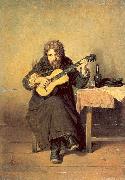 |
Perov, Vasily
|
|
Russian Painter, 1834-1882
Russian painter. Son of a public prosecutor, he studied intermittently at Arzamas from 1846 to 1849 at the Art School of Alexander Stupin (1776-1862), a classicist painter whose School was the first of its type in provincial Russia, and during the 1850s at the Moscow School of Painting, Sculpture and Architecture under Sergey Zaryanko. The work of Pavel Fedotov, pictorial satire in the press and genre scenes by the Old Dutch masters and William Hogarth were the greatest formative influences on Perov. His early works, permeated by a Biedermeier romantic spirit, combine detailed brushwork with anecdotal narrative and aim at criticizing social behaviour in line with the contemporary democratic doctrines of such writers as Nikolay Chernyshevsky. Such anti-clerical pictures as the Village Sermon (1861; Moscow, Tret'yakov Gal.) are distinguished by a particular irony. As in the prose of Nikolai Leskov, which has many affinities with Perov's painting, there is a conflict between feelings of love and hatred, and between an intimate knowledge of the daily life of the people and an alienating irony. In 1862-4 Perov travelled abroad, working mainly in Paris, where he painted a series of vivid genre scenes of city life. Perov's success as a genre painter reached its peak in the latter half of the 1860s. His compositions become more laconic and expressive; overcoming an indisciplined use of colour, he achieved an impressive unity with an austere greyish-brown palette. Such works as the Drowned Girl (1867) and the Last Tavern by the City Gates |
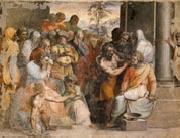 |
Perino Del Vaga
|
|
Italian Mannerist Painter, ca.1501-1547
Italian painter and draughtsman. He trained in Florence, first with Andrea de' Ceri and from the age of 11 with Ridolfo Ghirlandaio. According to Vasari, he practised drawing by copying Michelangelo's cartoon for the Battle of Cascina (destr.). For Pope Leo X's entry into Florence in November 1515 he painted an allegorical figure on one of the twelve triumphal arches. Soon after, an obscure Florentine painter called Vaga took Perino to Rome, where he became known as del Vaga. There he continued his drawing studies, copying from works of antiquity and Michelangelo's ceiling in the Sistine Chapel. On the recommendation of Giulio Romano and Giovanni Francesco Penni, he joined Raphael's workshop, where he learnt stuccowork and how to design grotesques, through assisting Giovanni da Udine in the Vatican Logge. Soon he was painting scenes from Raphael's designs, and five or six ceiling frescoes in the Logge, including the Story of Joshua and the Story of David, are generally accepted as his. |
 |
Pericles Pantazis
|
|
(Athens, 1849-1884) was a major Greek impressionist painter of the 19th century that gained a great reputation as an artist initially in Belgium.
Pantazis studied painting at the Athens School of Fine Arts from 1861 to 1871 with Nikiforos Lytras as his teacher. He continued for one year his studies in Munich and he then left for Marseille and Paris.In Paris he was taught by Gustave Courbet and Antoine Chintreuil. At this period he was introduced to the works of Eugene Boudin, Johan Barthold Jongkind and of the impressionists Manet, Camille Pissarro and Degas.
In 1873, with a reference letter from Manet, he moved to Brussels in Belgium. A notable Greek wine businessman Jean Économou was particularly interested in his skills and commissioned a large number of Pantazis paintings. In Belgium, Pantazis became a member of an anti-academic artistic group called Circle de la pâte (meaning the circle of colour), and a member of Les XX.
He became close friends with painter Guillaume Vogels and sculptor Auguste Philippette whose sister he married few years later. In Brussels, initially he worked as a home decorator for Guillaume Vogels but later he was dedicated to painting as he became increasingly known for his talent. In 1878 he represented Greece at the International Art Biennalle of Paris. He died before he turned 35 years old from chronic tuberculosis.
|
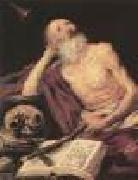 |
PEREDA, Antonio de
|
|
Spanish Baroque Era Painter, ca.1611-1678
Spanish painter. He was the son of a minor painter of the same name (d 1622) and, after his father died, about 1627 he moved to Madrid with his mother. There he entered the studio of Pedro de las Cuevas, and his fellow pupils included such artists as Juan Carreeo de Miranda, Francisco Camilo, Jusepe Leonardo and Antonio Arias Fernendez. He must also have known and studied the work of many masters esteemed at court, particularly Vicente Carducho, echoes of whose work can be found in the former's early paintings. Pereda received protection early on from a member of the Royal Council, Francisco de Tejada, and later from Giovanni Battista Crescenzi, a painter and patron who was in Spain from 1617. Pereda probably completed his training through contact with Crescenzi's collection and eventually he lived in Crescenzi's house. In 1634 Pereda executed Aid to Genoa (Madrid, Prado) for the decoration of the Salen de Reinos in the Casen Buen Retiro, Madrid, a project involving all the leading artists of Madrid, including Carducho, Velezquez, Zurbaren and Jose Leonardo. The death of Crescenzi in 1635 deprived Pereda of further court commissions and seems to have stopped him painting any further secular works other than still-lifes. Also in 1635 he began a well-documented career as a religious painter, producing large altar paintings and many other medium-sized works, probably for private worship. Outstanding among these is the Immaculate Conception (1637) in the Convento de los Felipenses, Alcale de Henares (Madrid). The important allegorical painting Vanitas |
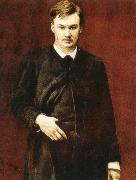 |
percy bysshe shelley
|
|
Born: 4 August 1792
Birthplace: Near Sussex, England
Died: 8 July 1822 (drowning)
Best Known As: 19th century romantic poet
|
 |
per wickenberg
|
|
1812-1846
Per Gabriel Wickenberg, född 1 oktober 1812 i Malmö, död 19 december 1846 i Pau, var en svensk konstnär.
Per Wickenberg kom från enkla förhållanden, hans far var fanjunkare, men visade tidigt en talang för teckning och måleri. 1831 skedde en insamling till hans förmån i Malmö, mend vars hjälp han fick möjlighet att komma till Stockholm att studera konst. Han besvärades tidigt av en ögonsjukdom, och med hjälp av bidrag från Konstföreningen i Stockholm fick han 1836 hjälp att resa till Tyskland för att söka bot. Efter tillfrisknandet valde han att stanna en tid i Berlin och vann där ett gott erkännande för sina tavlor. 1838 reste han till Paris, och vann där samma år guldmedalj på salongen för sin tavla "Nordiskt vinterlandskap". Wickenberg blev 1839 agre och 1842 ledamot av Konstakademien, under det att han stannade kvar i Paris. Wickenbergs ögonsjukdom återkom dock, och han insjuknade även i tuberkulos. Vintern 1843-44 uppehöll han sig i Nice, för att kurera sig, men förgåves, och 1846 avled han, bara 34 år gammal.
1842 tilldelades han Vasaorden och Hederslegionens kors. |
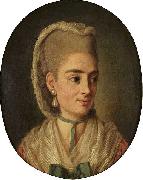 |
Per Krafft the Elder
|
|
(16 January 1724, Arboga - 7 November 1793, Stockholm) was a Swedish portraitist. He was the father of the artists Per Krafft the Younger and Wilhelmina Krafft.
|
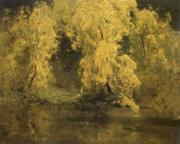 |
Penleigh boyd
|
|
Australia artist
1890-1923
was an Australian artist. Penleigh Boyd was a member of the Boyd artistic dynasty: his parents Arthur Merric Boyd (1862-1940) and Emma Minnie Boyd (n??e ?? Beckett) were well-known artists of the day, and his brothers included Merric Boyd the ceramacist (1888-1959) and the novelist Martin Boyd (1893-1972). His son Robin Boyd (1919-1971) was a noted writer and architectural critic, and his nephews Arthur Boyd and David Boyd became prominent artists. Born in England at Penleigh House, Westbury, Wiltshire, Boyd received his artistic training from his parents and at the National Gallery Art School. He had his first exhibition at the Victorian Artists' Society at 18, and exhibited at the Royal Academy in London at 21. He won second prize in the Australian Federal Government's competition for a painting of the site of the new national capital, Canberra. He won the Wynne Prize in 1914 with Landscape. He served in the AIF (Australian Infantry Forces) in France in World War I, and was invalided out after being badly gassed at the battle of Ypres in 1917. His career was cut short when he was killed in a car accident near Warragul, Victoria in 1923. Penleigh Boyd is best known as a landscapist with an accomplished handling of evanescent effects of light. A notable influence was artist E. Phillips Fox, who introduced him to plein air techniques when they were neighbours in Paris in 1912-1913. |
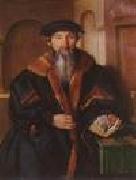 |
PENCZ, Georg
|
|
German Northern Renaissance Painter, ca.1500-1550
German painter, draughtsman and engraver. He arrived in Nuremberg in 1523 and entered Albrecht D?rer's workshop. On 12 January 1525 he was imprisoned with the brothers Barthel Beham and Sebald Beham and charged with disseminating the radical views of Thomas M?ntzer (c. 1490-1525) concerning religion and government. The council banished them from Nuremberg, but, after an appeal and intercession by Graf Albrecht von Mansfeld, Pencz was sent to nearby Windsheim, and on 16 November all three were pardoned, though placed under orders regarding their future behaviour. |
 |
PELLEGRINI, Giovanni Antonio
|
|
Italian Rococo Era Painter, 1675-1741
Italian painter. With Sebastiano Ricci and Jacopo Amigoni he was the most important Venetian history painter of the early 18th century. By uniting the High Renaissance style of Paolo Veronese with the Baroque of Pietro da Cortona and Luca Giordano, he created graceful decorations that were particularly successful with the aristocracy of central and northern Europe. He travelled widely, working in Austria, England, the Netherlands, Germany and France. |
 |
Pehr Horberg
|
|
was born January 31, 1746 in Virestad parish in Småland, Sweden and died January 24, 1816 in Risinge in Östergötland, Sweden, was a Swedish artist, painter and musician. In 1769 he married the maid Maria Eriksdotter and they had three sons.
Pehr Hörberg birthplace Virestad is a small town and a village in Älmhult Municipality in Kronoberg County, in Småland, Sweden. It was formerly the central area of the old Virestad parish. The church in Virestad was built of stone 1799-1800 on the site of a former medieval church. Some of its treasures include a pulpit from the 1600s and an altarpiece by Pehr Hörberg. He died in Falla in Hällestad Bergslag, where he owned 1/4 of the homestead, and part of the village Olstorp, in Risinge parish, where he also owned 1/4 of the homestead. Both the fourth in Falla in Hällestad and the fourth in Olstorp in Risinge were mining districts estates, located in Finspång Municipality in Östergötland County. Hörberg got his "huts in an aiding position", so to his own satisfaction that he 25 years later wrote about Olstorp and the farm in Falla, that he had later acquired, that the estates were very importat for him. |
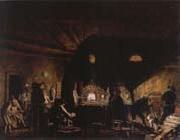 |
Pehr Hillestrom
|
|
Swedish, 1732-1816,was a Swedish artist and since 1794 a professor at the Swedish Royal Academy of Art. He became the director in 1810. He produced numerous paintings of mostly women and children performing various daily tasks inside upper- and middle-class homes in Stockholm. Dresses and furniture were painted exactly the way they looked and provide a valuable source of information about what life was like in those days. In addition to this he painted craftsmen in action at mills and other early industrial workplaces. Between 1757 and 1772 he worked as a master tapestry weaver, after learning the trade in France. |
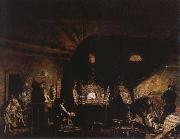 |
pehr hillestrom
|
|
Pehr Hilleström (1732-1816) var en svensk målare och vävare, professor vid Konstakademiens läroverk från 1794 och dess direktör från 1810. I unga år var han en av Sveriges främsta gobelängvävare men övergick sedan till måleri. Han är mest känd för sina vardagsskildringar av sin tids levnadssätt. Han målade pigor och tjänstefolk som arbetar, överklassen i de fina salarna, enkelt folk i stugorna och bilder från olika bruksmiljöer. Genom det räknas han som den största skildraren av den gustavianska samtiden.
Pehr Hilleström är far till konstnären Carl Petter Hilleström och farfars farfars far till Gustaf Hilleström.
Pehr Hilleström föddes i 1732 Väddö, Roslagen, troligtvis den 18 november. Han växte upp under fattiga omständigheter på Väddö prästgård vid sin farbror som var kyrkoherde där. Han var son till en militär och äldst i en syskonskara på 12 barn. Hans far råkade redan 1719 i rysk fångenskap men hade 1723 lyckats återvända till Sverige och då tagit sin tillflykt till brodern på Väddö.
1743 flyttade familjen Hilleström från Roslagen till Stockholm, där Pehr, 10 år gammal, sattes i lära hos tapet- och landskapsmålaren Johan Philip Korn (1727-1796) samt mellan åren 1744-1747 även hos den invandrade tyske solfjädermålaren Christian Fehmer. Utöver detta fick han även undervisning vid kungliga ritareakademin där Guillaume Thomas Taraval (1701-1750) och Jean Eric Rehn (1717-1793) var läromästare.
Efter inrådan från Carl Hårleman sattes Hilleström 1745 i lära hos Jean Louis Duru (-1753). Duru var hautelissevävare och hade kallats till Sverige för att göra textila utsmyckningen av Stockholms slott. Tanken var att Hilleström skulle utbildas till Durus medhjälpare. 1749 visade Hilleström upp ett första läroprov som visades upp för deputationen som gillade det så mycket så att han fick en belöning på 180 daler kopparmynt. När Duru dog i slutet av 1753 så fick Hilleström fullborda den påbörjade kappan för tronhimmelen i det kungliga audiensrummet. Han var då så skicklig att det knappt kunde märkas någon skillnad mellan hans och hans lärares arbete. Lönen var blygsam men vid 1756 års riksdag fick han samma årslön som Duru hade haft, och han fick en beställning på ett vävt porträtt av Hårleman utfört i hautelisse.
Åren 1757-58 var Hilleström på en längre och för tidens konstnärer sedvanlig studieresa till utlandet. Färden gick till Paris, Belgien och Holland, bland annat med en vidareutbildning i gobelängteknikerna som mål. I Paris blir Hilleström erbjuden att studera måleri i François Bouchers atelj??, men störst intryck tog han där av genre- och stillebenmålaren Jean-Baptiste-Sim??on Chardin, som undervisade honom vid franska målarakademien. Väl hemma i Stockholm fortsatte han visserligen att göra tapeter, mattor, stolsöverdrag och dylikt för hovet. Men så småningom fylldes slottet behov av vävnader samtidigt som Hilleström fortsatte studera måleri. |
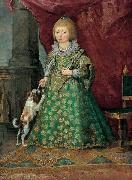 |
Peeter Danckers de Rij
|
|
Pieter, Peeter, or Peter Danckerts de Rij, Dankers de Ry, or Peteris Dankersas (1605, Amsterdam - 9 August 1661, Rudnik) was a Dutch Golden Age painter.
He was the son of Cornelis Danckerts de Ry, member of a large family of printers, painters and engravers.
Adam Kazanowski - by Peeter Danckers de Rij.
Example of Dankerts-Sandrart collaboration in print of PC Hooft. This 1642 engraving was painted by Sandrart, etched by Reinier van Persijn, and printed by Danckerts. The poem in Latin at the bottom was written by Caspar Barlaeus.Cornelis is mentioned in Houbraken's Schouburg as being one of the many teachers of Joachim von Sandrart in 1640-41, though considering Sandrart's age and experience (he had just returned to the North from his Grand Tour to Italy), this was more of a collaboration. Since Filippo Baldinucci later wrote a biograhical sketch on Pietro Danckerse de Ry in his list of artists called the Notizie, it is possible that Danckerts visited Italy at some time. In any case Sandrart engraved some of Peter's paintings after this period. Peter was active until 1640 in Amsterdam, and then he moved to Warsaw, Danzig, and Vilnius in the Polish-Lithuanian Commonwealth. He was active in Poland as the court painter and architect of the Polish King Władysław IV Vasa. According to Houbraken a poem was written in his honor that applauds his work in Poland. He died as the result of a highway robbery in the Redininkai Forest near Vilnius, Lithuania. |
 |
Pedro Weingatner
|
|
Pedro Weingärtner (Porto Alegre, 1853 e 1929) was an important Academic painter of Brazil, and the first artist born in Rio Grande do Sul to win international praise for his work.
Born to a family of German immigrants, he began his artistic career as an amateur, helped by his brother Ineio, who was a lithographer, and possibly also by painter Delfim da Câmara. Anyway, in 1878 he moved to Germany in order to study in the Grossherrzoglisch Badische Kunstschule, in Karlsruhe. There he became a pupil of Ferdinand Keller, Theodor Poeckh and Ernst Hildebrand. In 1880 Keller moved to Berlin, being followed by Weingärtner, who then enrolled in the local Academy.
In 1882 he left Germany for France, studying in the Academie Julian under Tony Robert-Fleury and William Adolphe Bouguereau. Wrecked by financial issues, he thought of abandoning his studies, but such situation was reverted by supportive friends, including Baron of Itajube, who got for him a special scholarship from emperor Peter II upon Bouguereau's advice. Then he could further his education in Rome.
Thereafter for many years he divided his time between Rio de Janeiro, Porto Alegre and Rome, traveling very often and being celebrated as one of the most important Brazilian painters of his generation. In Rio Grande do Sul he was a star. In 1920 he was back in Porto Alegre, where the remained until death. His fame declined from 1925 on, facing competition from new painters and changing tastes in local art.
He devoted all his efforts to a half-Realist half-Romantic approach to Academicism even while such styles were already being severely challenged by Modern tendencies. Major themes in his work were mythological scenes, landscapes and genre paintings focusing mainly immigrants and the gaucho, the folk type of Rio Grande do Sul people.
|
 |
Pedro Weingartner
|
|
(Porto Alegre, 1853 - 1929) was an important Academic painter of Brazil, and the first artist born in Rio Grande do Sul to win international praise for his work.
Born to a family of German immigrants, he began his artistic career as an amateur, helped by his brother Inecio, who was a lithographer, and possibly also by painter Delfim da Câmara. Anyway, in 1878 he moved to Germany in order to study in the Grossherrzoglisch Badische Kunstschule, in Karlsruhe. There he became a pupil of Ferdinand Keller, Theodor Poeckh and Ernst Hildebrand. In 1880 Keller moved to Berlin, being followed by Weingärtner, who then enrolled in the local Academy.
In 1882 he left Germany for France, studying in the Academie Julian under Tony Robert-Fleury and William Adolphe Bouguereau. Wrecked by financial issues, he thought of abandoning his studies, but such situation was reverted by supportive friends, including Baron of Itajube, who got for him a special scholarship from emperor Peter II upon Bouguereau's advice. Then he could further his education in Rome.
Thereafter for many years he divided his time between Rio de Janeiro, Porto Alegre and Rome, traveling very often and being celebrated as one of the most important Brazilian painters of his generation. In Rio Grande do Sul he was a star. In 1920 he was back in Porto Alegre, where the remained until death. His fame declined from 1925 on, facing competition from new painters and changing tastes in local art. |
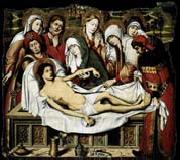 |
Pedro Sanchez
|
|
Spanish Early Renaissance Painter, active ca.1454-1468 |
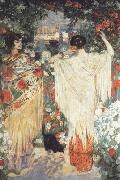 |
Pedro Blanes
|
|
1878-1926
Uruguayan painter. He first studied painting and drawing as a child with the Catalan painter Miguel Jaume i Bosch. As an adolescent he moved with his family to Spain, where he studied at the Real Academia de Bellas Artes de San Fernando in Madrid and frequented the workshop of Santiago Rusieol. After studying in Paris with Benjamin Constant, he visited Italy and Mallorca, where he first developed his talents as a landscape painter before returning briefly to Uruguay in 1899. During another prolonged visit to Europe from 1902 to 1907 he enthusiastically studied the work of Pierre Puvis de Chavannes, Lucien Simon, Henri Martin, Claude Monet and James Abbott McNeill Whistler. After his return to Montevideo in 1907 he painted shimmering Impressionist-influenced landscapes such as Palma de Mallorca and treated local rural and urban scenes in which he established himself as a remarkable colourist. He also commemorated subjects from Latin American history in works such as Artigas Dictating to his Secretary Don Jose G. Monterroso , the equestrian portrait of General Galarza and Artigas in el Hervidero. |
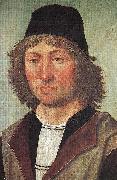 |
Pedro Berruguete
|
|
(c. 1450 - 1504) was a Spanish painter; his art is regarded as a transitional style between gothic and Renaissance. Born in Paredes de Nava, Spain, he went to Italy in 1480 and worked in Federigo da Montefeltro's court in Urbino, where he could see some works by Melozzo da Forle. He came back to Spain in 1482 and painted in several cities, such as Sevilla, Toledo and Ávila. He was the father of an important sculptor, Alonso Berruguete, considered the most important sculptor in Renaissance Spain.
|
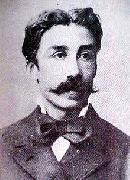 |
Pedro Americo
|
|
de Figueiredo e Melo (Areia, Brazil, 29 April 1843 - Florence, Italy, 7 October 1905) was one of the most important academic painters of Brazil. He was also a writer and a teacher.
He moved to Rio de Janeiro in 1854, where he was granted a scholarship to study in the Academia Imperial de Belas Artes (Imperial Academy of Fine Arts). Later he furthered his studies in Europe, at the École des Beaux-Arts in Paris, being a pupil of Jean-Auguste-Dominique Ingres, Hippolyte Flandrin and Carle-Horace Vernet, winning much praise for his paintings, and achieving the Doctorate in Sciences at the University of Brussels, in 1868.
Returning to Brazil, he produced a great series of masterpieces, including one of the most well known works of art in Brazil: Independence or Death!, depicting the moment when Prince Peter declared the country independent from Portugal, a work that has illustrated History books for elementary schools in Brazil for decades. Living mostly in Florence, Italy but traveling extensively back and forth from Rio de Janeiro, Pedro Am??rico managed to work also as a lecturer and an art historian.
He married Carlota de Ara??jo Porto-alegre (1844?C1918), daughter of painter and diplomat Manuel de Ara??jo Porto-alegre, and they had children. Knighted by the German Crown he was also Great Knight of the Order of the Holy Sepulchre. With the proclamation of the Republic in Brazil in 1889, he was elected a deputy of the National Assembly.
|
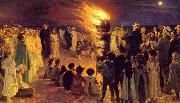 |
Peder Severin Kroyer
|
|
Norwegian-born Danish Painter, 1851-1909
Norwegian-Danish painter, was born in Stavanger, Norway to Ellen Cecilie Gjesdal. He is one of the best known and beloved, and undeniably the most colorful of the Skagen Painters, a community of Danish and Nordic artists who lived, gathered or worked in Skagen, Denmark, especially during the final decades of the 1800s. Krøyer was the unofficial leader of the group. The mother having been judged unfit, he was given to be cared for by Gjesdal's sister and the sister's husband. Along with the foster parents, he moved to Copenhagen soon afterwards. He began his art education at nine years of age under private tutelage, and was enrolled in Copenhagen's Technical Institute the following year. In 1870 at the age of 19 he completed his studies at the Royal Danish Academy of Art (Det Kongelige Danske Kunstakademi), where he studied with Frederik Vermehren. In 1873 he was awarded the gold medal and a scholarship. His official debut as a painter was in 1871 at Charlottenborg with a portrait of a friend, painter Frans Schwartz. He exhibited regularly at Charlottenborg throughout his lifetime. In 1874 Heinrich Hirschsprung bought his first painting from Krøyer, |
 |
Peder Severin Kroyer
|
|
(23 July 1851 - 21 November 1909), known as P.S. Krøyer, was a Norwegian-Danish painter. He is one of the best known and beloved, and undeniably the most colorful of the Skagen Painters, a community of Danish and Nordic artists who lived, gathered or worked in Skagen, Denmark, especially during the final decades of the 19th century. Krøyer was the unofficial leader of the group.
|
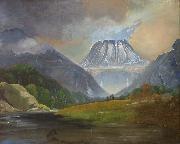 |
Peder Balke
|
|
Peter Andersen was born on the island of Helgøya, in Hedmark county, Norway. He grew up Ringsaker, but stayed in the 1820s on the Balke farm in Toten in Oppland county. Farmers in Toten paid his education, and as thanks he decorated several of the farms in Toten on his return. They actively encouraged his painting activities and later supported him in higher education.
In the autumn of 1827, Balke served as an apprentice to Heinrich August Grosch. he was also a student at the Tegneskole under Grosch and Jacob Munch. Balke signed a two year contract as an apprentice at the Danish decoration and artist Jens Funch. From autumn 1829 to spring 1833, he was a pupil of Carl Johan Fahlcrantz at the art academy in Stockholm. Balke was also a pupil of Johan Christian Dahl from 1843 to 1844.
During the summer of 1830 he walked through Telemark, Rjukan, Vestfjorddalen over Røldal and Kinsarvik to Bergen, and then back over Vossevangen to Gudvangen, further over Fillefjell to Valdres and thence across the mountains to Hallingdal. All the way he painted and drew small sketches that were later developed into paintings. He also traveled to Germany, and Russia. He visited Paris and London.
In Stockholm, he completed several of the paintings he had outlined of his Finnmark tour. Some of these were sold to the royal family. In 1846 he sold thirty of his paintings to Louis-Philippe of France for Versailles. Besides the 17 paintings in the National Gallery in Oslo, Peder Balke also is represented at several major art collections in Norway and Sweden.
|
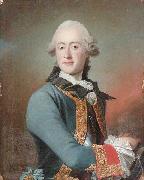 |
Peder Als
|
|
Peder Als, a Danish historical and portrait painter, born at Copenhagen in 1725, studied for some time under C. G. Pile. After gaining the first great prize given by the academy at Copenhagen in 1755, he went to Rome and entered the school of Mengs. He occupied himself chiefly in copying the pictures of Raphael and Andrea del Sarto, which it is said that he did with great accuracy. He also copied Correggio and Titian. On his return to his own country he painted some good portraits; but his colouring was too sombre to give a pleasing effect to his pictures of females, and his work was frequently so laboured as to be deprived of all animation. Copies of the works of the old masters by Als are to be seen in Denmark. He died in 1775. |
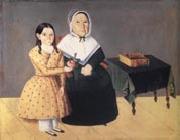 |
Peck Sheldon
|
|
American portrait painter and artist
b.1797 d.1868
American painter. A self-taught painter, he used his family as subjects in his early works, employing dark colours against flat backgrounds. After moving to Jordan, NY, in 1828 he used brighter colours and included more detail. He continued to paint on panel, almost always making half-length portraits characterized by such features as a broad brow, a wide, intense stare from detailed eyes and the use of a decorative brushstroke |
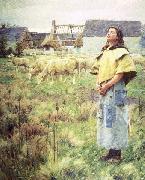 |
Pearce, Charles Sprague
|
|
American, 1851-1914
American artist, was born at Boston, Massachusetts. In 1873 Pearce became a pupil of L??on Bonnat in Paris, and after 1885 he lived in Paris and at Auvers-sur-Oise. He painted Egyptian and Algerian scenes, French peasants, and portraits, and also decorative work, notably for the Thomas Jefferson Building at the Library of Congress at Washington. He received medals at the Paris Salon and elsewhere, and was made Chevalier of the French Legion of Honor, decorated with the Order of Leopold, Belgium, the Order of the Red Eagle, Prussia, and the Order of the Dannebrog, Denmark. Among his best known paintings are The Decapitation of St John the Baptist (1881), in the Art Institute of Chicago; Prayer (1884), |
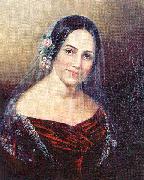 |
Peale, Sarah Miriam
|
|
American Painter, 1800-1885
Painter, daughter of James Peale. The most notable of James Peale's painting daughters, she also studied with her uncle Charles Willson Peale and her cousin Rembrandt Peale, from whom she developed her talent for colour and precision in details. As studio assistant to her father, she occasionally introduced into his work bright and intricate fabrics. Her career began in 1817 with the exhibition of Flowers at the Pennsylvania Academy of the Fine Arts. In the 1820s she painted in Baltimore and Philadelphia; in 1824 she was elected to the Pennsylvania Academy. From 1831 to 1846 she maintained her studio in Baltimore where she was a popular portrait painter, producing unpretentious but intelligent and occasionally romantic portraits characterized by a fine concern for materials, as in Mrs Perry Eccleston Noel (c. 1822; Baltimore, Mus. & Lib. MD Hist.). Her sitters included such prominent politicians as Daniel Webster (1842; St Louis, MO Hist. Soc. Mus.) and Abel Park Upshur (1842; Baltimore, Mus. & Lib. MD Hist.). In 1847 Sarah moved to St Louis, MO, where for 32 years she was in great demand. From 1859 her still-lifes won prizes at the St Louis fairs; they were loosely painted works different from the tightly controlled table-top pieces of her father and sister. Sarah's portraiture also changed, from the elegant, precise Neo-classicism learnt from her cousin Rembrandt to a looser, |
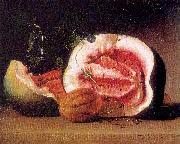 |
Peale, Raphaelle
|
|
American Painter, 1774-1825
Painter, son of Charles Willson Peale. His mother was Rachel Brewer Peale. He studied painting with his father and assisted him in the museum. Raphaelle began to paint portraits professionally in 1794, but poor patronage in Philadelphia forced him to travel in the South and New England, taking silhouettes with the physiognotrace and painting portraits in oil and miniature. From about 1815 onwards, bouts of alcoholism and gout inhibited his progress. He turned to painting still-lifes, but these sold for small amounts. |
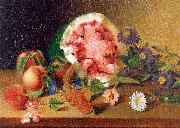 |
Peale, James
|
|
American, 1749-1831
Painter, brother of Charles Willson Peale. Charles encouraged him to become a painter; James also worked as a frame-maker for his brother until the Revolution, in which he served as a lieutenant. From 1779 James shared Charles's practice, specializing in miniatures. His early work, occasionally confused with Charles's, shows his brother's influence. After 1794, his style became clearly his own: more delicate with subtle colour harmonies, softened outlines and free handling; it may be distinguished by a faint violet tone in the shadows and the inconspicuous signature 'IP'. His miniatures of male subjects are frequently superior to his portraits of women, for example Benjamin Harwood (1799; Baltimore, Mus. & Lib. MD Hist.), but his meticulous attention to costume and his success in imparting colour and sparkle to skin and eyes, |
|

